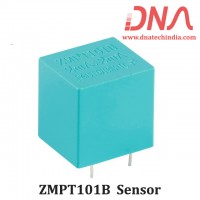|
The concept of serial communication is simple, in serial communication data is sent one bit at a time. Serial communication requires only one line for the data; second line for ground & possible a third line for clock. Although this is slower than parallel communication, which allows the transmission of an entire byte at once, it is simpler & requires less physical wires for communication so can be used over longer distances |
||
|
IEEE 488 specifications for parallel communication state that the cabling between equipment can be no more than 20 meters total, with no more than 2 meters between any two devices; serial, however, can extend as much as 1200 meters. |
||
|
Synchronous and asynchronous transmissions are two different methods of transmission. In Synchronous transmission the transmitter & receiver are synchronized through external clock, while in asynchronous transmission the transmitter & receiver are synchronized by special signals along the transmission medium.
|
||
SYNCHRONOUS TRANSMISSION |
||
|
Figure 1 shows the block diagram of Synchronous transmission. As you can see a common clock line is required between the transmitter & receiver. |
||
|
||
|
|
||
ASYNCHRONOUS TRANSMISSION |
||
| In asynchronous transmission since the transmitter & receiver are synchronized by special signals along the transmission medium there is no need of the clock signal. Asynchronous transmissions is advantageous over long distance, moreover it is easy to set up & well suited for application where messages are generated at irregular intervals. | ||
| There is no clock pulse so the receiver must know at what rate the data is transmitted (Baud Rate). It should also know the number of bits per word (DATA BITS) the transmitter is using as well as it should know when the data begins (START BIT) & where the data stops (STOP BIT).All the above parameter make up the PROTOCOL. If the receiver & transmitters protocol is the same then receiver will receive the correct data. | ||
|
|
||
BAUD RATEIt indicates the number of bits transferred per second. So when we say 9600 BAUD RATE it means 9600 BITS per second. (Please note its is Bits per Second not Bytes per Second) |
||
|
|
||
DATA BITSIt indicates the number of bits in a Transmission WORD. In asynchronous communication other that the data which is normally 8-bit at least two more bits i.e. START bit & STOP bits are transmitted. So the actual number of bits transmitted is ten. |
||
|
|
||
START and STOP BITSThe receiver should know when the data transmission has started; this is indicated by the START BIT. In most protocols the start bit is LOGIC 0. So when no data is being transmitted the data line is HIGH. And the receiver waits for the 1 to 0 transition & once this transition occurs the receiver knows that the data is being transmitted. The receiver knows the baud rate as well as the number of bits to be received i.e. eight so it reads the eight bits after the start bit & then checks if the next bit is a STOP BIT which is basically a LOGIC 1. If the last bit is not LOGIC 1 then it assumes error in communication & then dumps the data. |
||
|
|
||
RS 232 Standard |
||
|
RS232 is a most basic & the oldest form of UART. It is basically used for POINT TO POINT Communication. Since transmit & receive lines are different it can operate in full duplex mode. The RS 232 standard defines different voltage level corresponding to Logic 1 & Logic 0. Logic 1 is defined as negative voltage & Logic 0 is defined as positive voltage. Valid voltages are in range of plus or minus 3 to 15 Volts for Logic 0 & Logic 1 correspondingly. Since the voltage level is higher than the used in the digital circuit’s special driver circuit are required to convert the logic levels. |
||
|
|
||
HANDSHAKINGCommunication can occur even without the handshaking. Handshaking increases the number of lines between the two devices but if any one of the devices is busy with some other task it can to stop the transfer & resume only when it finishes its task. |
||
|
|
||
RS 485 Standard |
||
|
It is basically a standard for one master, two wire, multipoint, half duplex serial communication. In this standard the difference between the two wires voltage determines the data. The minimum difference of potential should be at least 0.2v. The RS 485 standard specifies only the electrical characteristic of driver & the receiver its does not specify the data protocol. Since the communication uses differential balanced line, it can be used for relatively larger distances as compared to RS 232. |
||
|
When using this standard the two ends of the cable should have a termination Resistor. The most significant effect of unterminated data transmission is the introduction of signal reflections onto the transmission line. Also the Termination resistors also reduce electrical noise sensitivity due to the lower impedance, and bias resistors are required. |
||
|
Figure 2 shows one of the most common modes of termination. |
||
|
.





